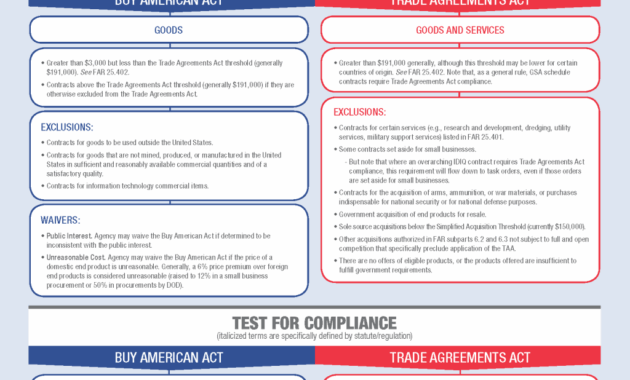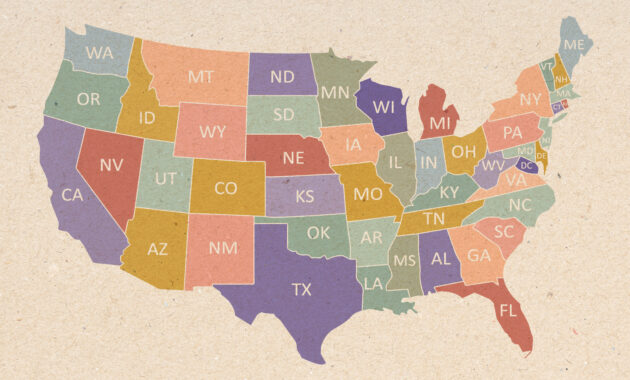Okay, so let’s dive into something that’s been kicking around for a while now: the Buy American Act and its implications for, well, buying American. Or, perhaps more accurately, buying from America or certain designated countries. It’s a concept that seems straightforward on the surface – support domestic industries, create jobs, boost the economy – but the devil, as always, is in the details. And the 2025 landscape adds even more layers to unpack.
Buy American Act and Designated Countries
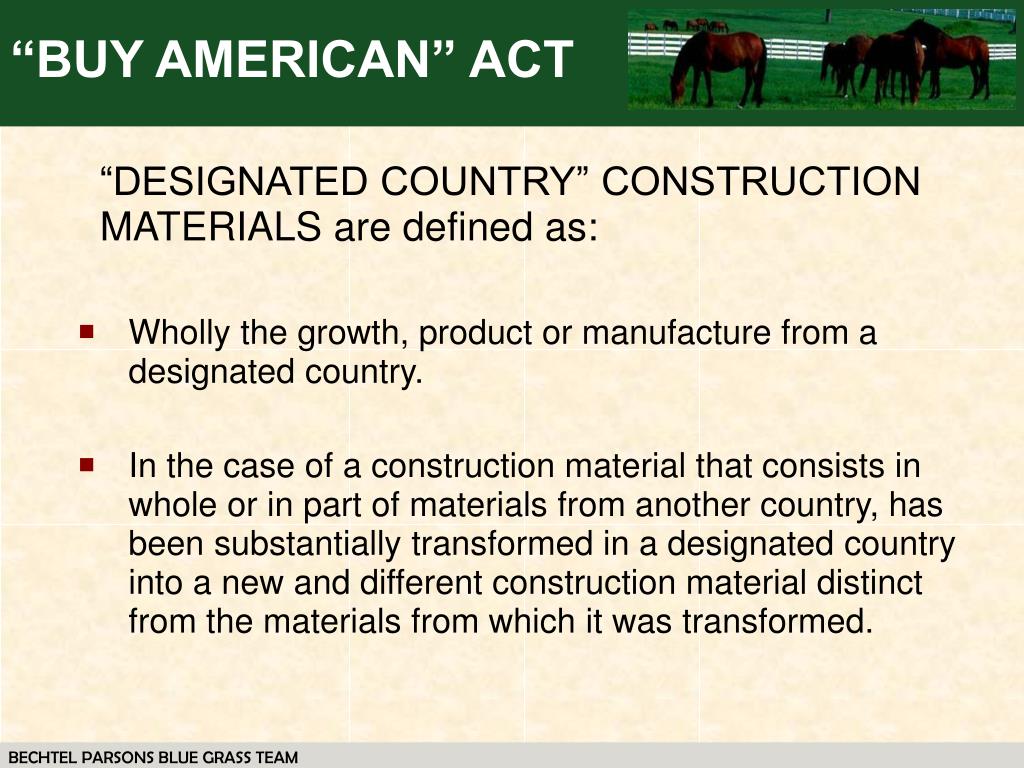
The core idea of the Buy American Act is pretty simple: when the U.S. government is spending taxpayer dollars on goods, it should prioritize buying those goods from American sources. That means goods that are manufactured in the United States, and where a significant portion of the component parts are also of U.S. origin. This preference isn’t absolute, of course. There are exceptions for things like if American-made goods are unavailable, or if they’re prohibitively expensive compared to foreign alternatives. But the underlying principle is to give American businesses a leg up when competing for government contracts.
Now, here’s where it gets a little more nuanced. The Buy American Act doesn’t just apply to goods made entirely in the U.S. It also extends to goods from certain “designated countries.” These are countries that have reciprocal trade agreements with the United States, meaning they offer similar preferential treatment to American goods in their own government procurement processes. The exact list of designated countries can change over time, based on evolving trade relationships and political considerations. Keeping track of this list is crucial for businesses on both sides of the equation – American companies looking to sell to the U.S. government, and foreign companies from designated countries hoping to compete.
So, who typically makes the list? Well, it often includes countries with close economic and political ties to the United States, such as Canada, Mexico (thanks to agreements like the USMCA), and countries within the European Union. However, this isn’t an exhaustive list, and it’s subject to change. Therefore, it’s always a good idea to check the official sources and government publications for the most up-to-date information.
The impact of the Buy American Act extends beyond just the immediate sale of goods. It can have a ripple effect throughout the economy, supporting domestic manufacturing jobs, encouraging innovation, and strengthening supply chains. However, it’s not without its critics. Some argue that it can lead to higher prices for government projects, reduce competition, and potentially strain relationships with trading partners. Others point out that defining “American-made” can be tricky, especially in a globalized economy where supply chains are often complex and intertwined.
For companies navigating this landscape, understanding the rules of the game is paramount. They need to be aware of the requirements for domestic content, the list of designated countries, and the exceptions that may apply. They also need to be prepared to document the origin of their goods and materials to demonstrate compliance. Failure to comply can result in penalties, including being barred from bidding on government contracts.
Buy American Act in 2025
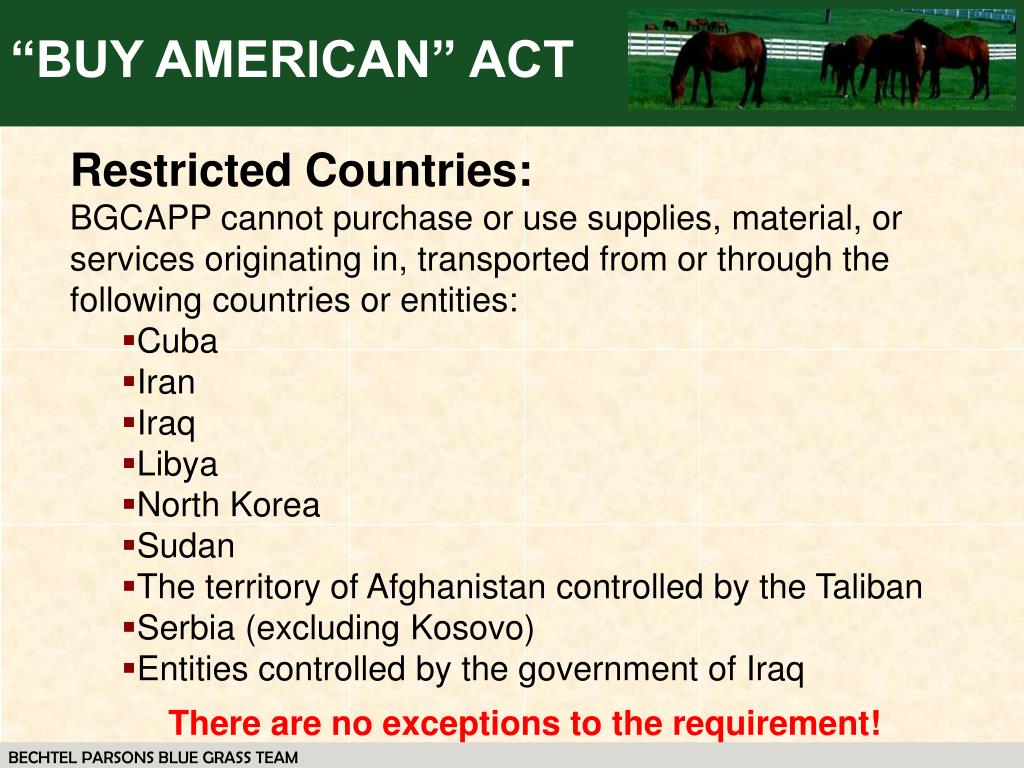
Looking ahead to 2025, the Buy American Act is likely to remain a significant factor in government procurement. However, several trends and factors could shape its future impact. One is the ongoing debate about the balance between protectionism and free trade. There are arguments on both sides, and the political climate can influence the direction of policy. A shift towards greater protectionism could lead to stricter enforcement of the Buy American Act and potentially expand the list of goods and services covered by its requirements. Conversely, a renewed focus on free trade could lead to a softening of the Act’s provisions and a greater emphasis on international cooperation.
Another key factor is the evolving nature of global supply chains. As companies increasingly rely on suppliers from around the world, it can be challenging to determine the true origin of goods and materials. This raises questions about how to effectively enforce the Buy American Act and ensure that its objectives are being met. Technological advancements, such as blockchain, could potentially play a role in improving supply chain transparency and traceability, making it easier to verify the origin of goods.
Furthermore, the rise of new economic powers, such as China, could also influence the Buy American Act. As these countries become more competitive in global markets, they may seek to challenge the Act’s provisions or negotiate reciprocal trade agreements that offer them preferential treatment in U.S. government procurement. This could lead to changes in the list of designated countries and a re-evaluation of the Act’s overall effectiveness.
The infrastructure bill passed recently injects a lot of money into infrastructure projects across the US. This also means more scrutiny on the “Buy American” rules. Projects funded by the bill will be subject to stricter requirements for using American-made materials, aiming to boost domestic manufacturing and create jobs. This includes things like iron, steel, and manufactured products, emphasizing local sourcing whenever possible. Waivers might be granted in certain cases, like if there aren’t enough American suppliers or if costs are significantly higher, but the emphasis is clearly on buying American to maximize the economic benefits within the country.
Beyond infrastructure, the increasing focus on national security could also strengthen the Buy American Act. As concerns about supply chain vulnerabilities and reliance on foreign suppliers grow, the government may be more inclined to prioritize domestic sourcing for critical goods and services. This could lead to stricter regulations on the procurement of sensitive technologies and materials, such as semiconductors, telecommunications equipment, and pharmaceuticals. The COVID-19 pandemic shone a light on the vulnerabilities of relying heavily on global supply chains for essential goods. This experience is likely to lead to a greater emphasis on domestic manufacturing and diversification of supply sources to ensure resilience in the face of future disruptions.
In conclusion, the Buy American Act is a complex and evolving piece of legislation that plays a significant role in U.S. government procurement. Its impact extends beyond just the immediate sale of goods, affecting domestic manufacturing, global trade relationships, and national security. Looking ahead to 2025, several factors, including the political climate, the evolving nature of global supply chains, and the rise of new economic powers, could shape the Act’s future impact. For businesses operating in this landscape, staying informed about the latest developments and understanding the rules of the game is crucial for success.
Moreover, the definition of “American-made” is continuously being refined. What percentage of components needs to be domestic for a product to qualify? How are products assembled or processed in the US with foreign components treated? These are ongoing questions that lawyers and businesses must grapple with to ensure compliance. A key aspect is demonstrating compliance. Businesses need to have robust systems for tracking the origin of their materials and documenting their manufacturing processes. This can involve significant investment in supply chain management software and training for employees. Without proper documentation, it’s difficult to prove that a product meets the Buy American Act requirements.
Finally, businesses should also consider the reputational impact of their sourcing decisions. Consumers are increasingly interested in supporting companies that prioritize domestic manufacturing and ethical sourcing practices. By emphasizing their commitment to buying American, businesses can enhance their brand image and attract customers who value these principles.
If you are looking for Buy American Act Countries 2025 List – Rodie Chiarra you’ve visit to the right web. We have 5 Images about Buy American Act Countries 2025 List – Rodie Chiarra like "Buy America", "Buy American Act" and "Buy American" Provisions in, Buy American Act Countries 2025 List – Carina Starlin and also Buy American Act Countries 2025 List – Rodie Chiarra. Here it is:
Buy American Act Countries 2025 List – Rodie Chiarra

cheryemariejeanne.pages.dev
Buy American Act Countries 2025 List – Rodie Chiarra

cheryemariejeanne.pages.dev
Buy American Act Countries 2025 List – Rodie Chiarra
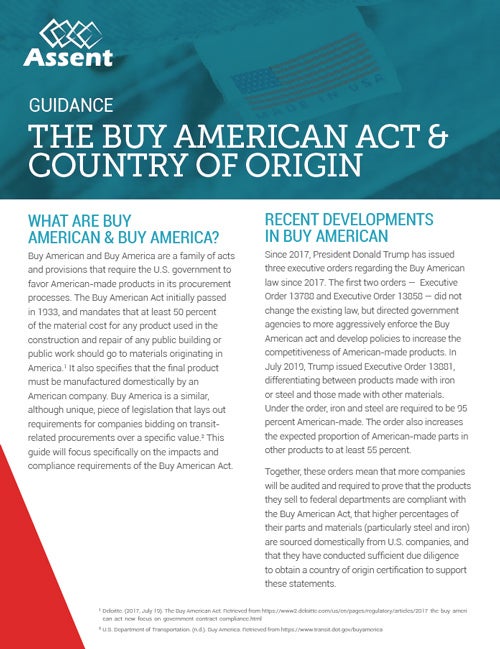
cheryemariejeanne.pages.dev
"Buy America", "Buy American Act" And "Buy American" Provisions In

www.scribd.com
Buy American Act Countries 2025 List – Carina Starlin

agnesyealasaid.pages.dev
Buy american act countries 2025 list. Buy american act countries 2025 list. "buy america", "buy american act" and "buy american" provisions in



